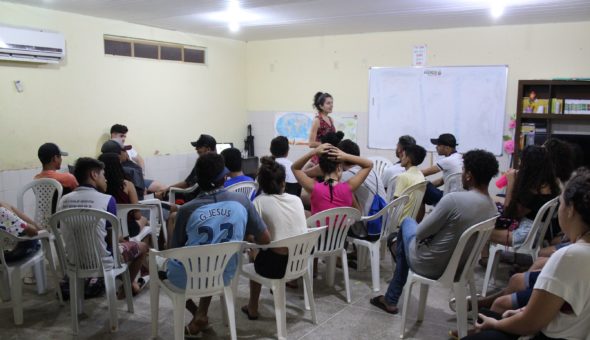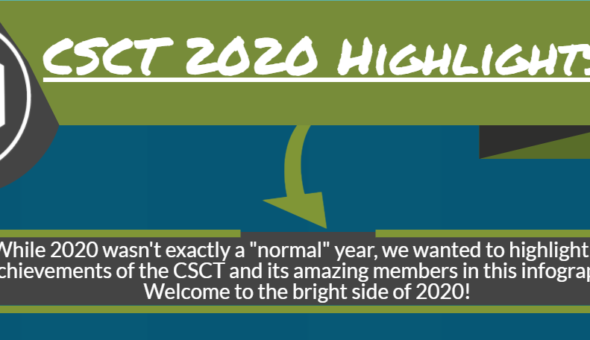This post was contributed by Marcus Johns.
A few weeks ago a certain Jon Chouler approached me to say that he thought I would be perfect for his Science Stand Up event. I’ll admit, I was a little apprehensive about this. Yes, I enjoy performing – having been a member of the musical and theatrical societies since I started university – and have been known to put a few ad-libs in last-night performances that the audience found quite funny, but a whole ten minutes of just me and a microphone trying to make people laugh whilst informing them about my research? That seemed quite the challenge. I initially tried to avoid signing up to the event saying that I was interested but that I was rather busy, what with being a third year PhD student and all that. Fortunately Jon persisted and eventually I relented, signing my life (or at least a few hours of it) away in the name of public engagement. However I still had absolutely no idea how to go about writing my routine or even what it would be on.
Happily, Jon had organised an excellent stand-up comedy workshop to help grow our funny bones and get the creative juices flowing. This turned out to be a very insightful event that enabled us to learn about the specific techniques used in stand-up comedy and practice putting them into effect. One such technique, which reminds me of the arrow in the FedEx logo – once you’ve seen it, you can never avoid it – is the rule of three. This technique, that you’ll notice comedians the world over use, involves listing two sensible things followed by the joke item. For example: What do you find in an ordinary handbag? Purse, lipstick and the kitchen sink. Three items allows an air of expectation to build up – the audience are expecting you to be funny after all – but doesn’t allow them to become too bored waiting for the punchline. Of course there are many variations on this basic premise – Monty Python probably pushed it to its extremes with the infamous “Spam” sketch in which the proprietor of a greasy spoon café lists the spam-filled menu finally ending on "Lobster Thermidor aux crevettes with a Mornay sauce, garnished with truffle pâté, brandy and a fried egg on top and Spam”. You’ll notice in my routine, see video below, that I also have my own variation in which I list three places in the body from which we can extract adult stem cells (bone marrow, teeth and fat) but then use the final item as the basis for the next joke.
After the workshop I realised three important things. Firstly, in order to make the routine appeal to a wide audience it had to be relatable to them. It would be easy to create a routine that was full of references that a bunch of people who worked with cells day in, day out would understand but this would only alienate the general public. Of course I included a couple of jokes that not everyone would get – the “expanding business” line for example – but the majority were designed for Joe Bloggs. Secondly, the entire routine didn’t have to be about science. Yes, I may be a scientist but I’m a person first of all. Stand-up allows you to present your personality and experiences at the same time as the actual subject. I enjoy using controversy as a way to make individuals think about the larger view and perhaps not take everything at face value. Hence the Christian Scientist joke that I designed specifically to be controversial – there were definitely a few people in the audience at The Bath Brew House event who weren’t over-impressed with it but that’s the nature of comedy.
Finally, the piece had to have a story that the audience could follow. Admittedly, this is perhaps easier for tissue engineering compared to something like zeolite production* but the concept is the same. In this instance I introduced myself and created a link (two things that I hold in high regard) that enabled me to introduce coronary heart disease. In reality coronary heart disease has very little bearing on my actual research – I personally feel that in this case prevention is definitely better than a potential cure especially from an economic perspective – but it’s definitely easier to explain something that everyone has heard about rather than trying to explain that my research could one day be useful for repairing heart birth defects, which I think would a much more realistic and meaningful output. This creates the thread used to lead the audience to the concept of tissue engineering (we need a biological solution for a biological problem) and, finally, my research. Well, a visual gag based on my research – at this point my time was up!
 The actual process of writing the routine was pretty much based on flashes of inspiration and a few glasses of wine (alcohol is scientifically proven to improve creativity, although not productivity…). A few hours spent memorising the script before a quick rehearsal the day before the performance to confirm that I wasn’t going to go massively over the ten minute time limit led to me being ceremoniously dumped on the stage to open the second half. Incidentally, at that point I was shaking like a leaf although – top tip – keeping up the appearance of being confident meant that they didn’t notice this and an early successful joke settled my nerves pretty rapidly. A second piece of advice is to get someone to film you. Yes, it is excruciatingly painful to watch yourself back on film (I still hate the sound of my voice) but it enabled me to determine which jokes didn’t work and where I could cut material if required. I recently performed the same routine at Science Showoff at the Grain Barge in Bristol, which is where the video above was shot, and was able to cut the routine to their required nine minutes relatively easily. I thoroughly enjoyed the whole process and would absolutely recommend performing stand-up to anyone who’s happy to make jokes about all their hard work. My next challenge is to create a routine that involves my actual research – I think an analogy based on Goldilocks and the Three Bears might work!
The actual process of writing the routine was pretty much based on flashes of inspiration and a few glasses of wine (alcohol is scientifically proven to improve creativity, although not productivity…). A few hours spent memorising the script before a quick rehearsal the day before the performance to confirm that I wasn’t going to go massively over the ten minute time limit led to me being ceremoniously dumped on the stage to open the second half. Incidentally, at that point I was shaking like a leaf although – top tip – keeping up the appearance of being confident meant that they didn’t notice this and an early successful joke settled my nerves pretty rapidly. A second piece of advice is to get someone to film you. Yes, it is excruciatingly painful to watch yourself back on film (I still hate the sound of my voice) but it enabled me to determine which jokes didn’t work and where I could cut material if required. I recently performed the same routine at Science Showoff at the Grain Barge in Bristol, which is where the video above was shot, and was able to cut the routine to their required nine minutes relatively easily. I thoroughly enjoyed the whole process and would absolutely recommend performing stand-up to anyone who’s happy to make jokes about all their hard work. My next challenge is to create a routine that involves my actual research – I think an analogy based on Goldilocks and the Three Bears might work!
* This is genuinely one of the reasons why I chose my PhD – I wanted to do something that the general public could easily relate to. That, and that it’s an upcoming area that offers good job prospects.
Marcus is in his final year in the CSCT working towards his PhD on “Biomaterials for the Cardiac Environment” with Dr Ram Sharma, Dr Janet Scott and Dr Sameer Rahatekar.
Respond


